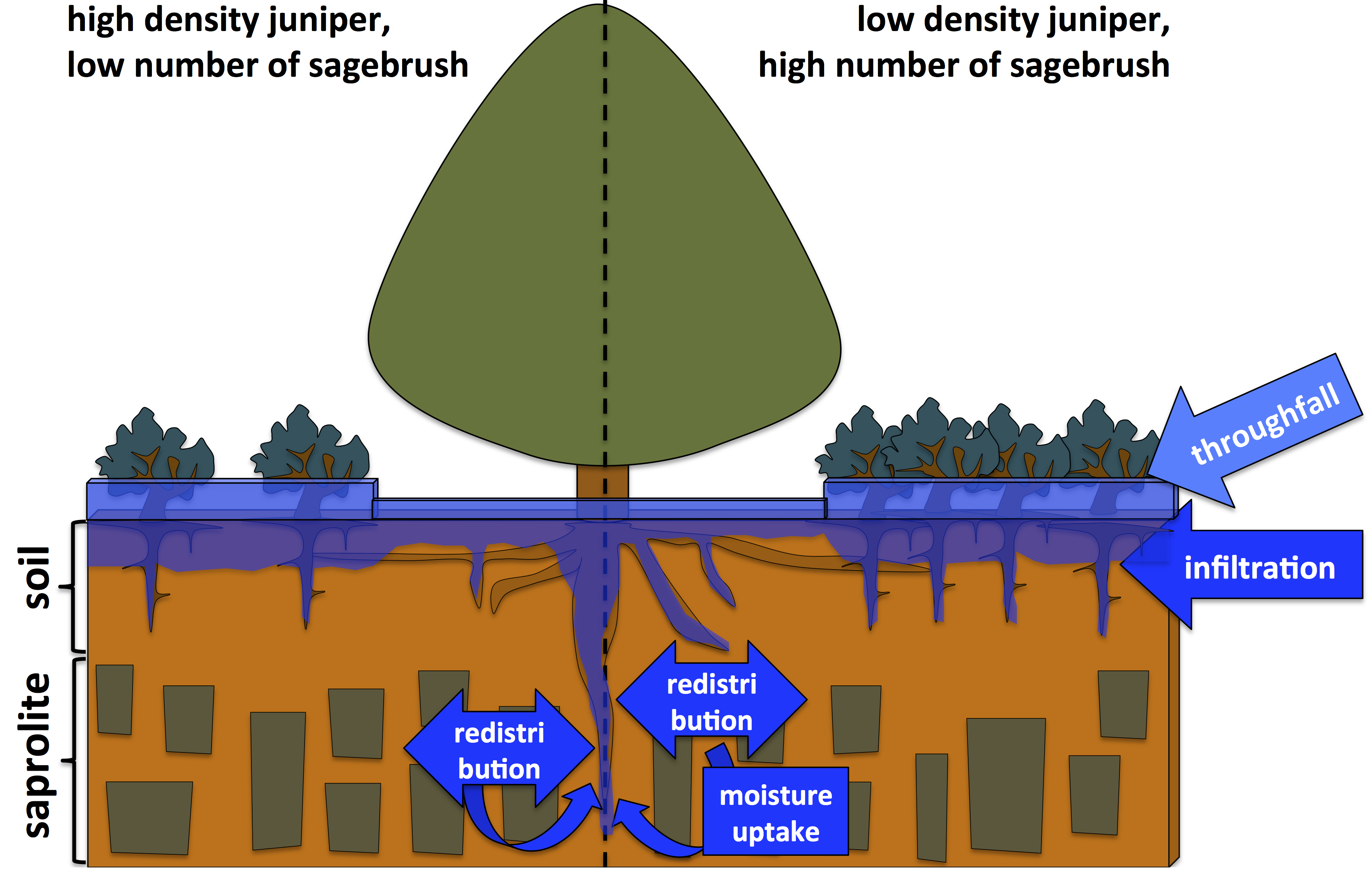Juniper Hydrology Conceptual Model
With our understanding of interception, snow, soil, and saprolite/weathered bedrock hydrologic processes in areas with western juniper and sagebrush, we developed a conceptual model to understand how hydrologic processes differ between juniper and sagebrush. Here is that conceptual model below.
Our study revealed that juniper have multiple "strategic" advantages which maximizes their utilization of water:
-
Juniper intercept a significant portion of precipitaiton which reduces water that reaches the soil below the tree. However, during some snow events, increased snow deposition occurs below the trees due to snow wells formed around the trees (described here). This preferential snow depsotion due to snow wells results in an elevated snow melt under the tree.
-
Our soil moisture study revealed that at the surface, more infiltration occured after rain storms under juniper compared to sagebrush, when adjacent sagebrush were low density (left side of conceputal model). Conversley, more infiltration occured in sagebrush comapred to juniper when juniper were higher density (right side).
-
The same soil moisture study revealed infiltration to deeper layers (60 cm) after rain events only occured below juniper. This strongly evidences roots and preferential flow increasing infiltration. This means deep rooted juniper likely allow infiltration deep into the soil and saprolite.
-
Our geophysical study indicated that changes in the subsurface from the wet to dry season occurred under large juniper trees and occurred at some locations as deep as 12 m (39 feet). This evidences that juniper roots likely preferentially funnel water deep into the subsurface, and extract that water in the dry season.
Taken as a whole, and western juniper trees are likely resilient under changes in climate or periods of drought. This may be in part why they have expanded into many areas previously dominated by sagebrush.

Figure caption: Conceptual figure of water processes related to juniper and sagebrush including throughfall, infiltration, and subsurface water uptake between the canopy and sagebrush in the interspace in low and high density juniper areas. More throughfall occurs in the interspace with sagebrush due to greater juniper canopy interception and resulting greater total infiltration in the near surface of the interspace. But due to roots facilitating preferential infiltration below the juniper and sagebrush, deeper infiltration occurs in areas with A) more sagebrush and B) juniper. Infiltration goes deeper in the interspace where there are more sagebrush. Infiltration goes deepest below juniper regardless of where it resides. Juniper also uptake subsurface water at deep in the saprolite (Niemeyer et al. 2017, Journal of Hydrology).
Information on this page is based on this publication and this publication, where you can find more detailed information about this conceptual model and related processes.